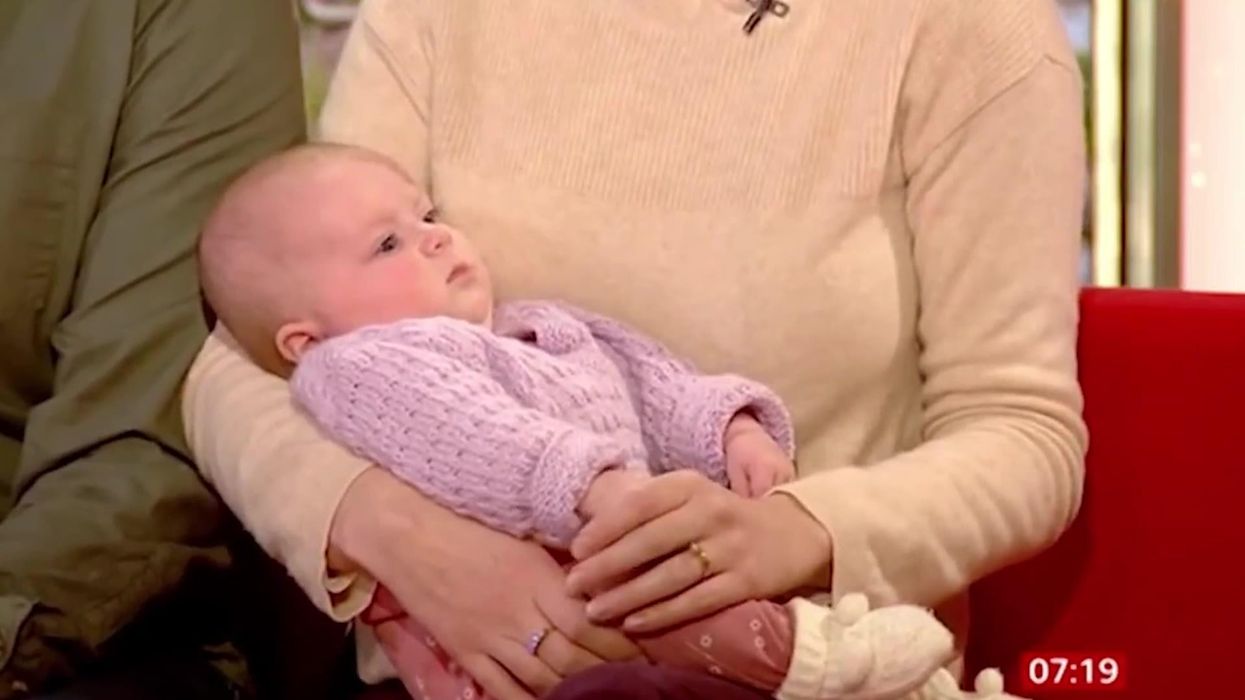Science & Tech
Sinead Butler
Dec 27, 2022
Baby farts during cancer segment on BBC Breakfast
content.jwplatform.com
Many of us find it cute when babies kick in the womb but now the reason why has come to light - and it’s not to hone their footy skills.
Babies can certainly make their presence known when they begin to move (kick, flutter, swish or roll) in the womb between 16 and 24 weeks. A kick can carry a force of more than 10lbs (ouch) but the sensation has mystified scientists for centuries.
However, now we have answers. Kicking helps the baby's development, according to scientists.
The new research published in study Proceedings of the National Academy of Sciences shows these random movements aid to boost the development of the sensorimotor system - for example, hand-eye coordination.
Right from birth - and even before - infants start to kick, wiggle and move seemingly without aim or external stimulation.
Sign up to our free Indy100 weekly newsletter
Now a model shows it helps the infant learn to control its body.
The discovery has consequences for medical conditions and the development of more agile machines.
With a musculoskeletal computer model, a Japanese team detailed motion capture of newborns and infants where communication muscles and sensations across the whole body were analysed.
The babies' random exploratory behaviour resulted in patterns of developing muscle interaction which later helped them perform sequential movements.
This new information can help gain further understanding of medical conditions and disorders from cramps and spasms to multiple sclerosis, spinal cord injury, motor neurone disease and even cerebral palsy.
The hundreds of neurons that control each muscle are synchronised in the foetus to create strong contractions that activate 'sensors'.
A better understanding of the sensorimotor system development could lead to earlier diagnoses and more effective treatments.
Knowledge of how babies learn to move their bodies is limited at the moment.
Dr Hoshinori Kanazawa, of the University of Tokyo and a co-author of the study, said: "Previous research into sensorimotor development has focused on kinematic properties, muscle activities which cause movement in a joint or a part of the body.
"However, our study focused on muscle activity and sensory input signals for the whole body.
"By combining a musculoskeletal model and neuroscientific method, we found spontaneous movements, which seem to have no explicit task or purpose, contribute to coordinated sensorimotor development."
These results were based on the recorded joint movement of 12 healthy newborns less than 10 days old and 10 young infants aged about three months.
Muscle activity and sensory input signals were estimated using the infant-scale musculoskeletal computer model of the whole body.
Computer algorithms to analysed space and time, or 'spatiotemporal', features of the interactions.
"We were surprised during spontaneous movement, infants' movements 'wandered' and they pursued various sensorimotor interactions," Dr Kanazawa added.
"We named this phenomenon ‘sensorimotor wandering'. It has been commonly assumed sensorimotor system development generally depends on the occurrence of repeated sensorimotor interactions, meaning the more you do the same action the more likely you are to learn and remember it.
"However, our results implied infants develop their own sensorimotor system based on explorational behaviour or curiosity, so they are not just repeating the same action but a variety of actions.
"In addition to this, our findings provide a conceptual linkage between early spontaneous movements and spontaneous neuronal activity."
Previous studies on humans and animals have shown that motor behaviour involves a small set of primitive muscular control patterns seen in task-specific or cyclic movements, like walking or reaching.
Though these latest results support the theory spontaneous whole-body movements without an explicit purpose or task help to acquire newborns and infants coordination skills.
Through 'sensorimotor wandering', the babies showed an increase in coordinated whole-body and anticipatory movements.
Infants showed more common patterns and sequential movements, compared to the random movements of the newborn group.
The next plan Prof Kanazawa has is to study how sensorimotor wandering affects later development, such as walking and reaching, along with more complex behaviours and higher cognitive functions.
"My original background is in infant rehabilitation," he added.
"My big goal through my research is to understand the underlying mechanisms of early motor development and to find knowledge that will help to promote baby development."
Additional SWNS reporting by Mark Waghorn
Have your say in our news democracy. Click the upvote icon at the top of the page to help raise this article through the indy100 rankings.
Top 100
The Conversation (0)














